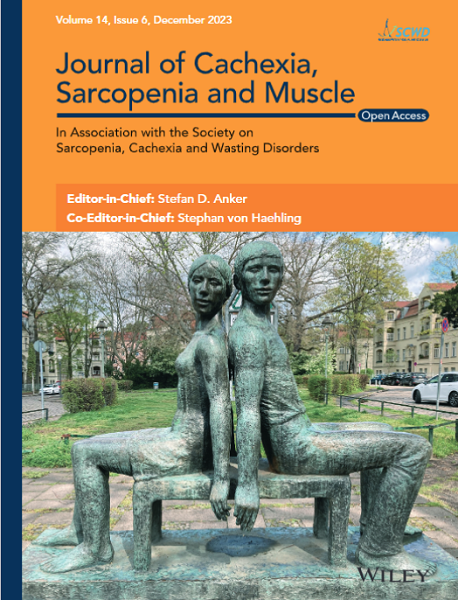O-GlcNAcase Inhibitor Improves Denervation-Induced Muscle Atrophy in Mice
Abstract
Background
Skeletal muscle atrophy occurs in various situations, such as denervation, fasting and ageing. Disruption of the balance between protein synthesis and degradation plays an important role in muscle atrophy, and impaired Akt phosphorylation is considered to be crucial in this process. The attachment of an O-linked N-acetylglucosamine motif (O-GlcNAcylation), which is a post-translational modification mediated by the hexosamine biosynthetic pathway, an alternative pathway of glycolysis, is involved in the regulation of protein function. Akt O-GlcNAcylation interacts with Akt phosphorylation, thereby regulating its function. The purpose of this study was to clarify the role of O-GlcNAcylation in skeletal muscle atrophy and to identify a therapeutic target for its prevention.
Methods
Denervation was induced by cutting the sciatic nerve on the right leg of male C57BL/6J mice. A sham operation was performed on the left leg. Three days after the operation, the mice were divided into two groups: One group was treated with the O-GlcNAcase inhibitor thiamet G (1 mg/kg body weight/day), and the other group was treated with vehicle. Seven days after the operation, the gastrocnemius muscle was collected and analysed. The effect of adeno-associated virus serotype 1–mediated suppression of O-GlcNAcase on skeletal muscle atrophy was also investigated. Finally, in C2C12 myotubes with adenovirus-mediated overexpression of wild-type Akt and O-GlcNAcylation-resistant mutant Akt (T479A), the interaction between the phosphorylation and O-GlcNAcylation of Akt was investigated.
Results
The weight of denervated gastrocnemius muscle was decreased by 35.6% (p < 0.05) compared with sham. Akt phosphorylation was decreased by 27.8% (p < 0.05), and the expression of the muscle-specific ubiquitin ligases muscle atrophy F-box (atrogin-1) and muscle RING Finger-1 (MuRF1) was increased in denervated muscle compared with sham. Akt O-GlcNAcylation was decreased in denervated muscle compared with sham by 45.3% (p < 0.05), together with an 8.9-fold increase in O-GlcNAcase expression. Thiamet G reduced gastrocnemius muscle weight loss by 22.7% (p < 0.05) compared with vehicle, and this was achieved through an increase in Akt phosphorylation by 63.5% (p < 0.05) and decreases in atrogin-1 and MuRF1 expression. The inhibition of O-GlcNAcase by gene silencing also improved skeletal muscle atrophy. The overexpression of mutant Akt (T479A) showed less O-GlcNAcase inhibition-induced Akt phosphorylation than the overexpression of wild-type Akt.
Conclusions
O-GlcNAcase inhibition improved denervation-induced skeletal muscle atrophy in mice by increasing Akt O-GlcNAcylation. O-GlcNAcase may hence be a therapeutic target for preventing skeletal muscle atrophy.


 求助内容:
求助内容: 应助结果提醒方式:
应助结果提醒方式:


